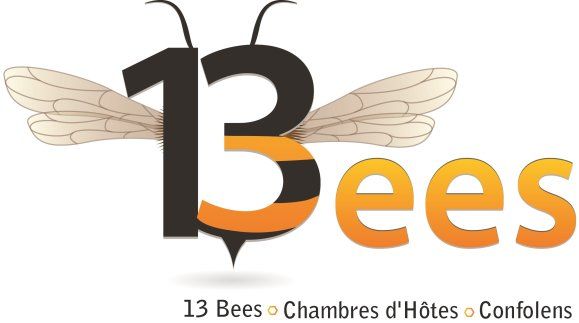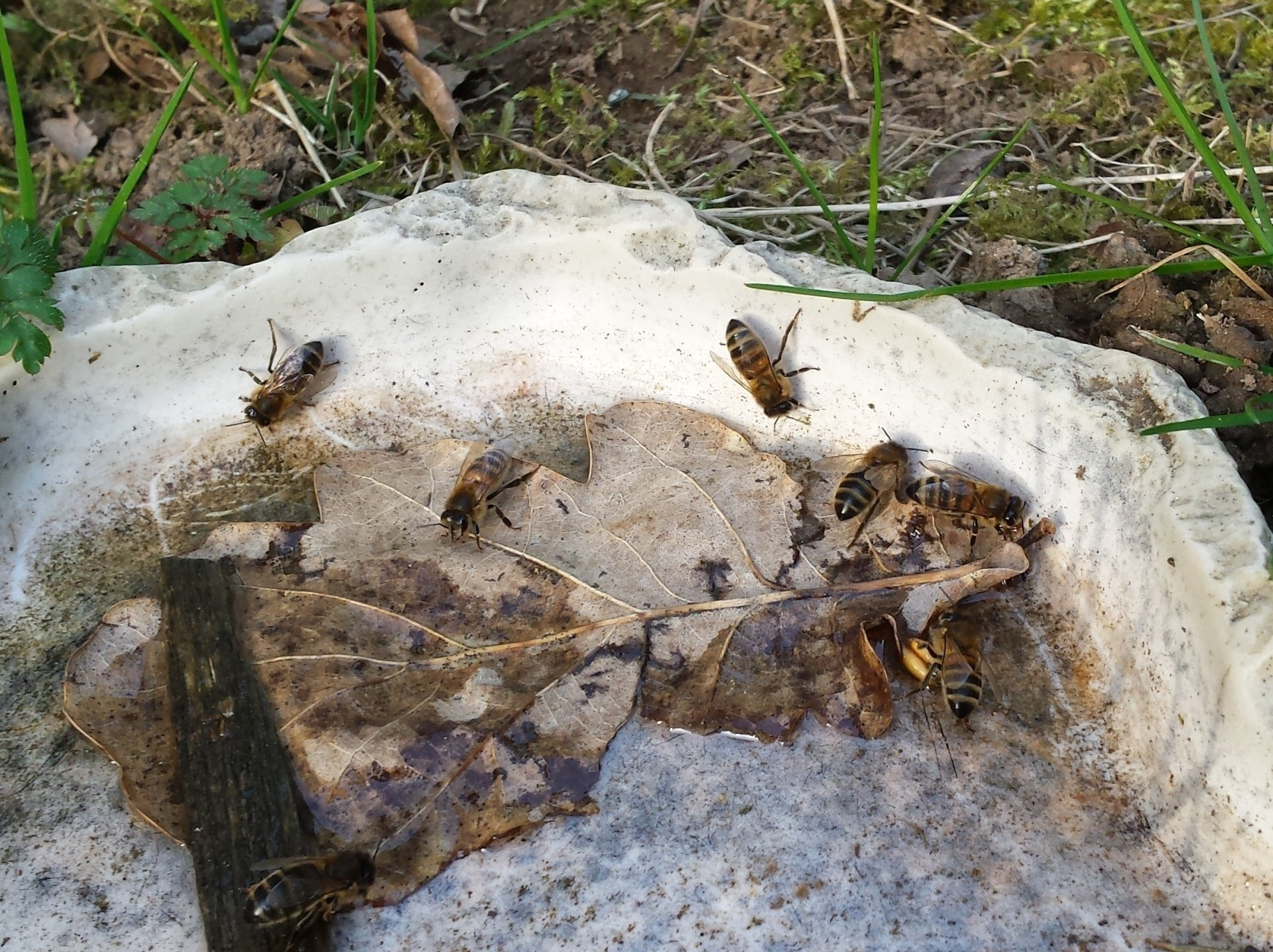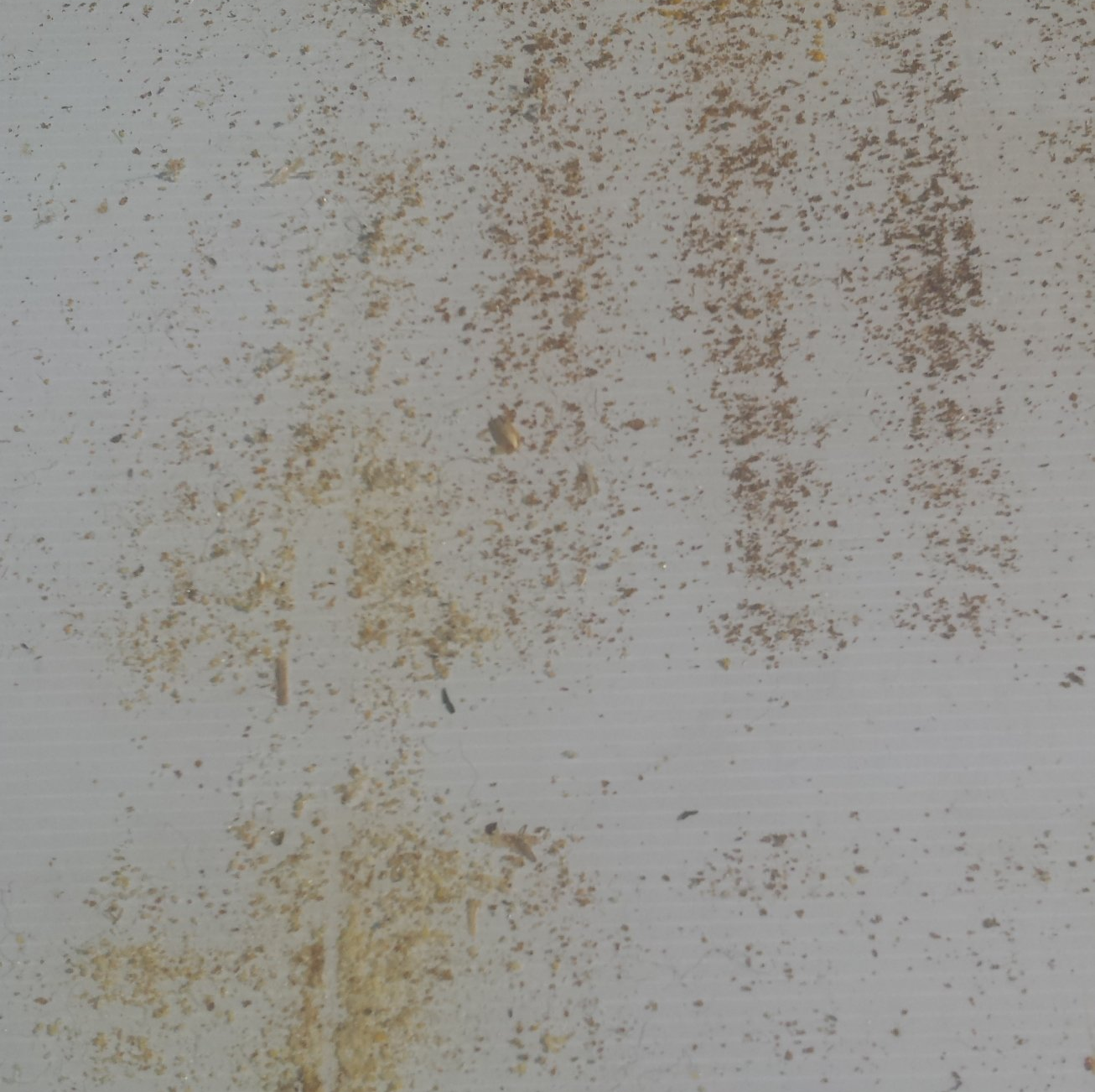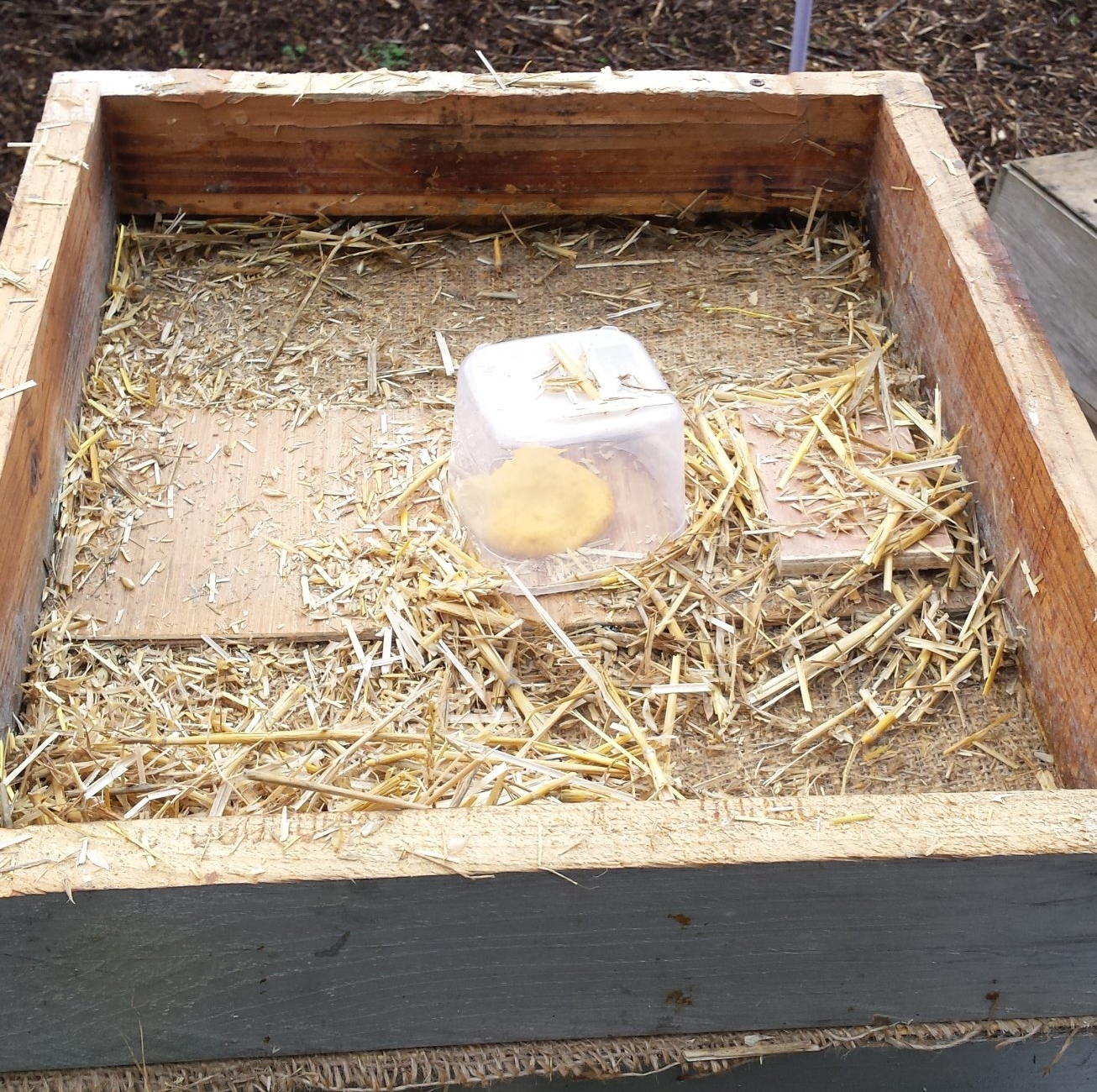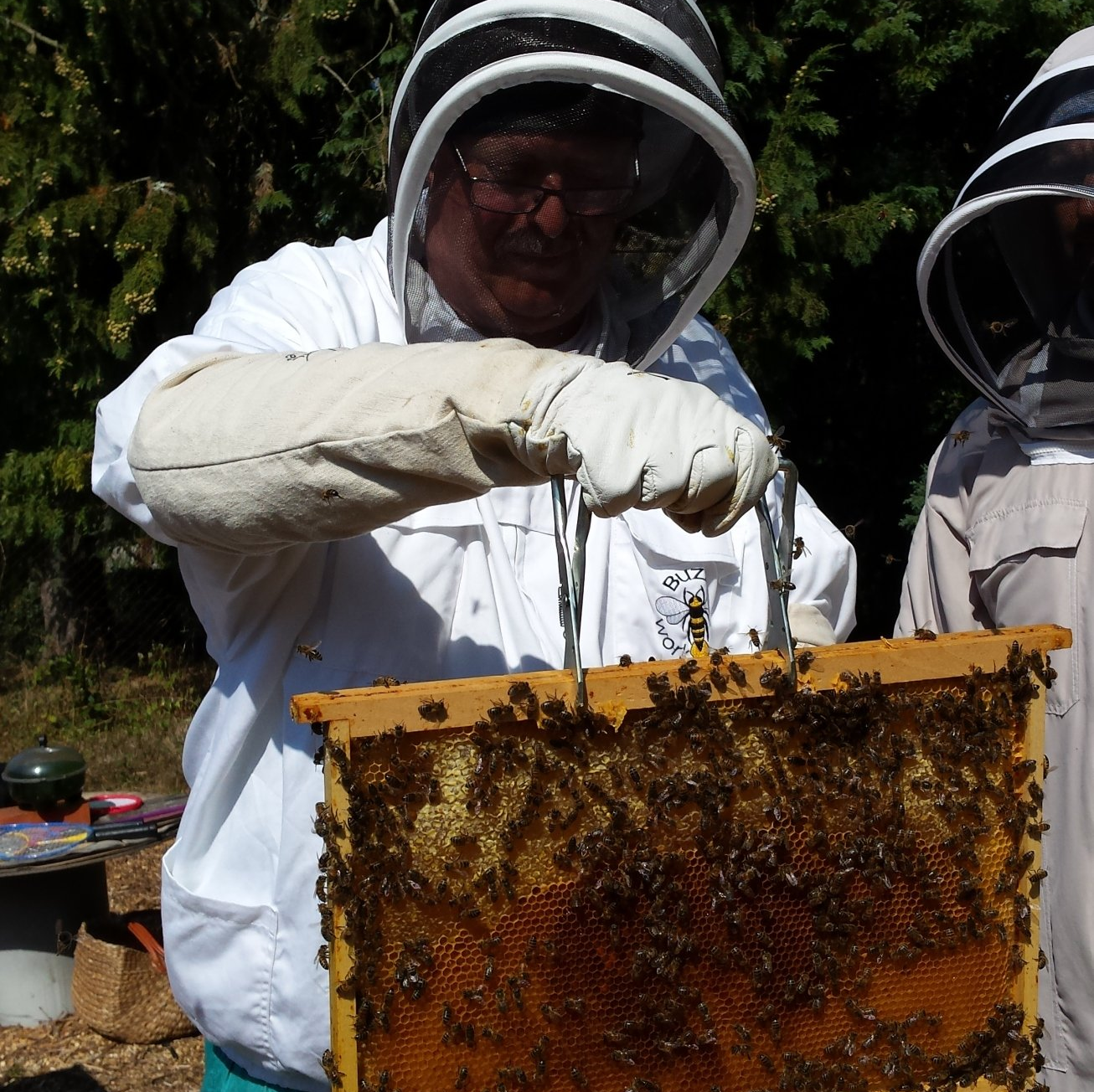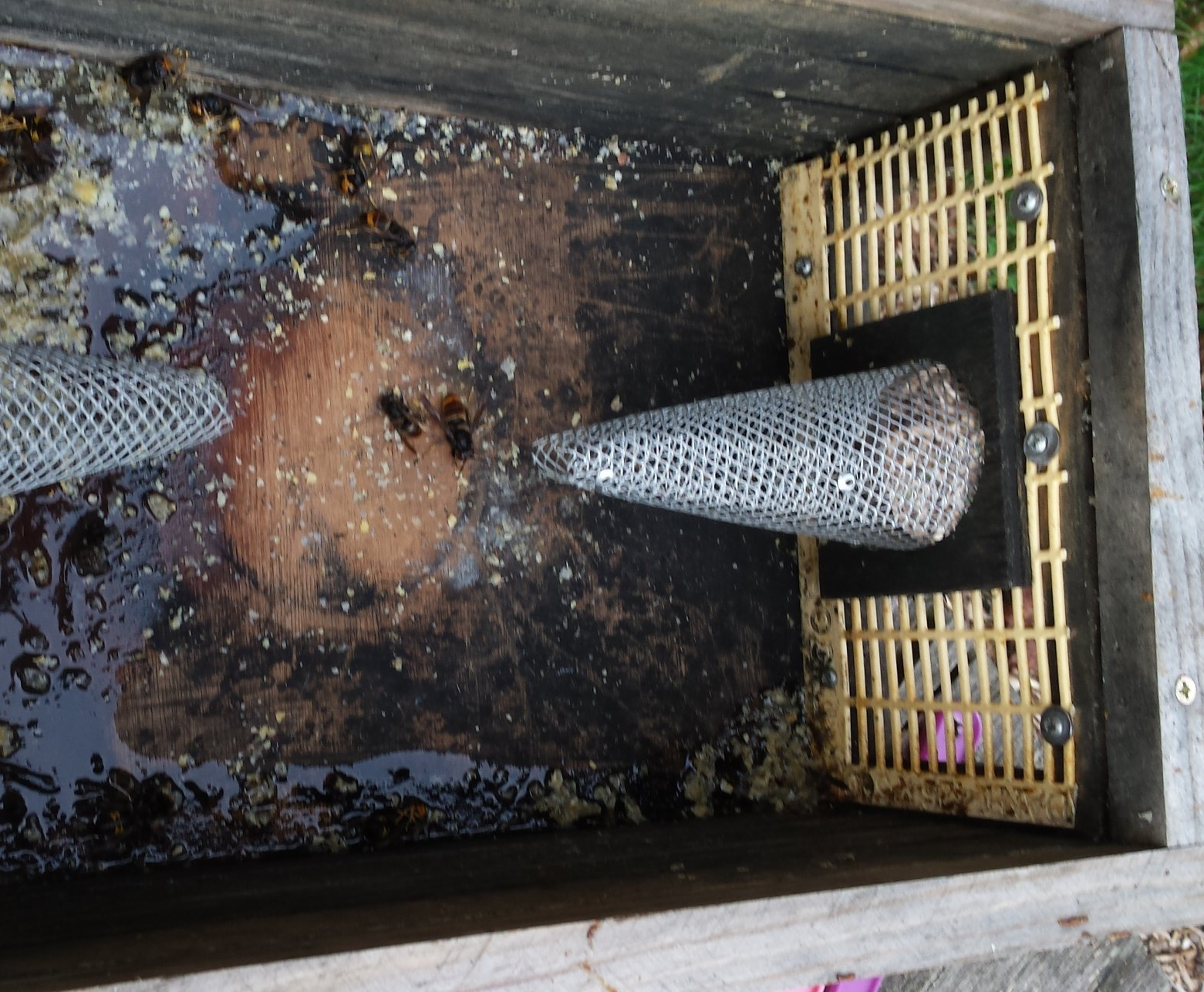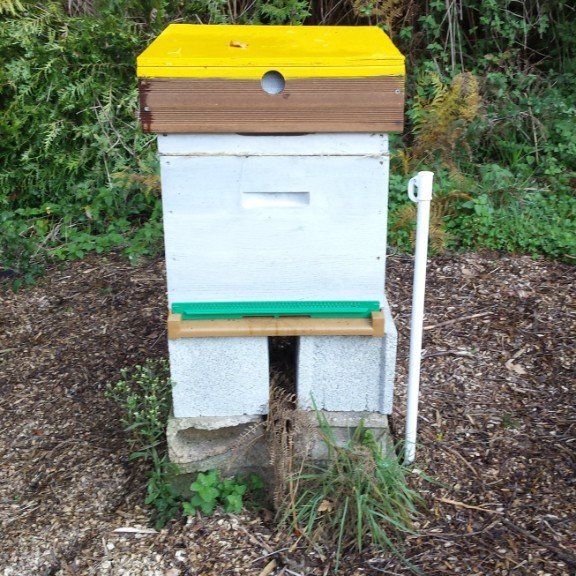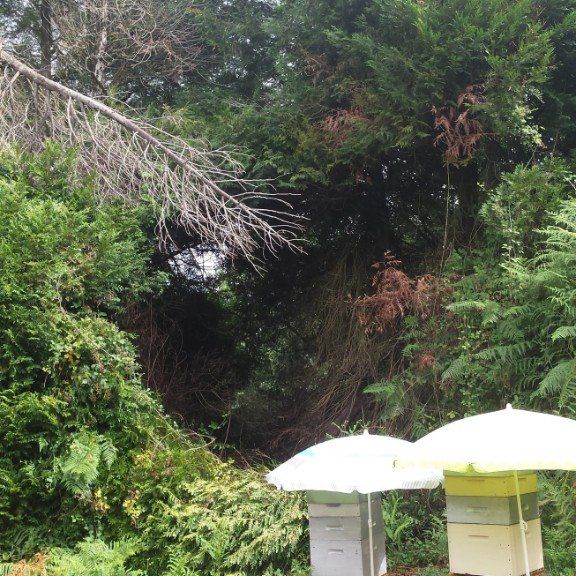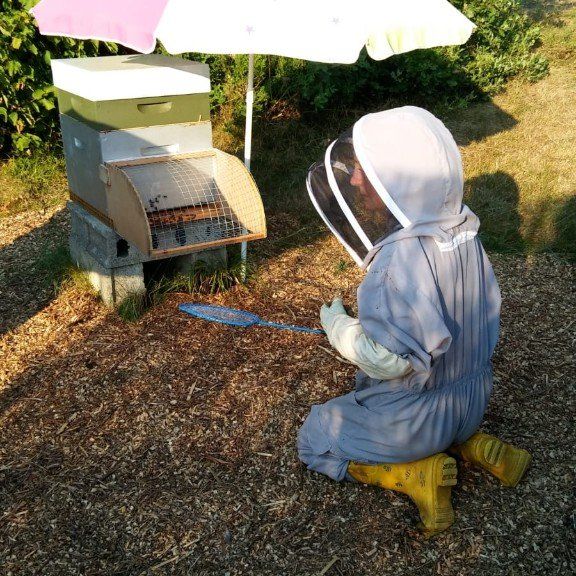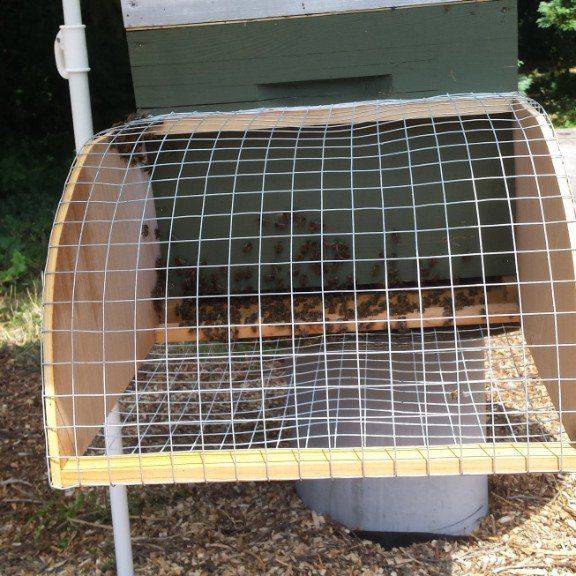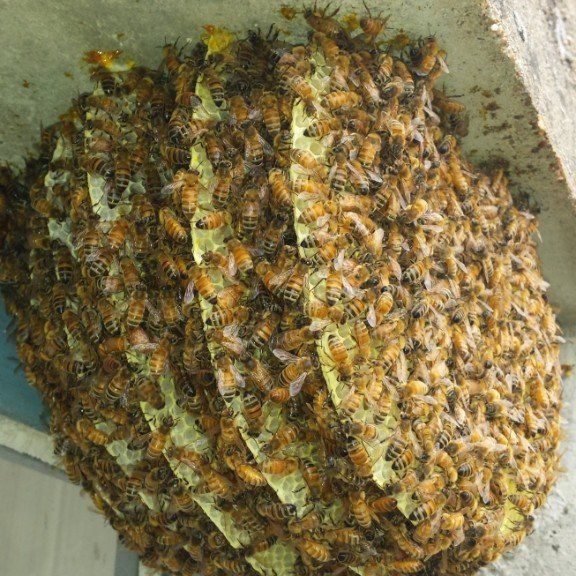Colour Me Bee-autiful!
The many shades of pollen
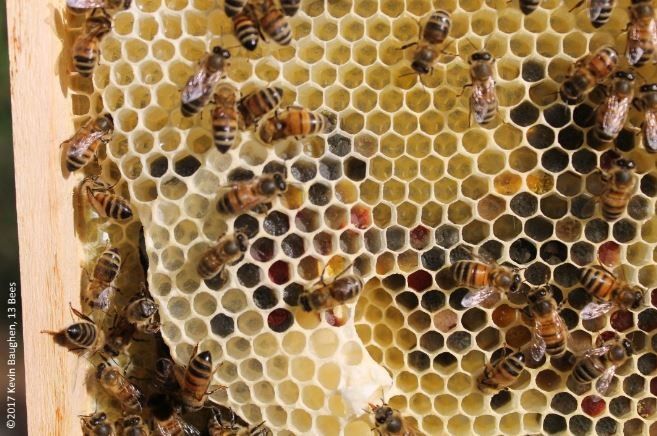
What a busy month May has been! Even the weather hasn't rested on its laurels, keeping us guessing as to what mood it will be in each day, but after several days of cold drizzle, summer appears to have arrived with a bang. The bees haven't been idle either; they've not been making hay while the sun shines but instead have been out foraging for pollen to feed the thousands of new bees that are emerging in the hives.
The colour of pollen is purely down to the plant that provided it and recently we've seen cells full of bright orange pollen from dandelions. However, we had a bit of a surprise when we inspected our newest hive the other day; it's in a different part of the garden and clearly the bees have decided to ignore the hawthorn and gorse that the other colonies are currently visiting. The pollen being stored in this hive (see the picture above) is a strange purplish/dark-grey colour which sent us straight to the Pollen Identification cards (available from IBRA, the International Bee Research Association) where we were reliably informed it is probably 'phacelia'. This is none other than the wild tansy that we have growing in the meadow, so maybe the pollen is from there....or is it from the field beans being grown in the allotments on the other side of the river, which also provides grey/mauve pollen? We can only be sure by tagging our bees and we weren't that keen on getting that involved...! We're just happy that the baby bees will have something to eat this month.


